Live-Animal Eating Exposed
Imagine being pulled from a tank, flung onto a table, and pinned down as your arms and legs are cut off. At restaurants across the country, octopuses—after suffering a harrowing shipment halfway around the world—are hacked apart and served as a Korean dish called “sannakji.”
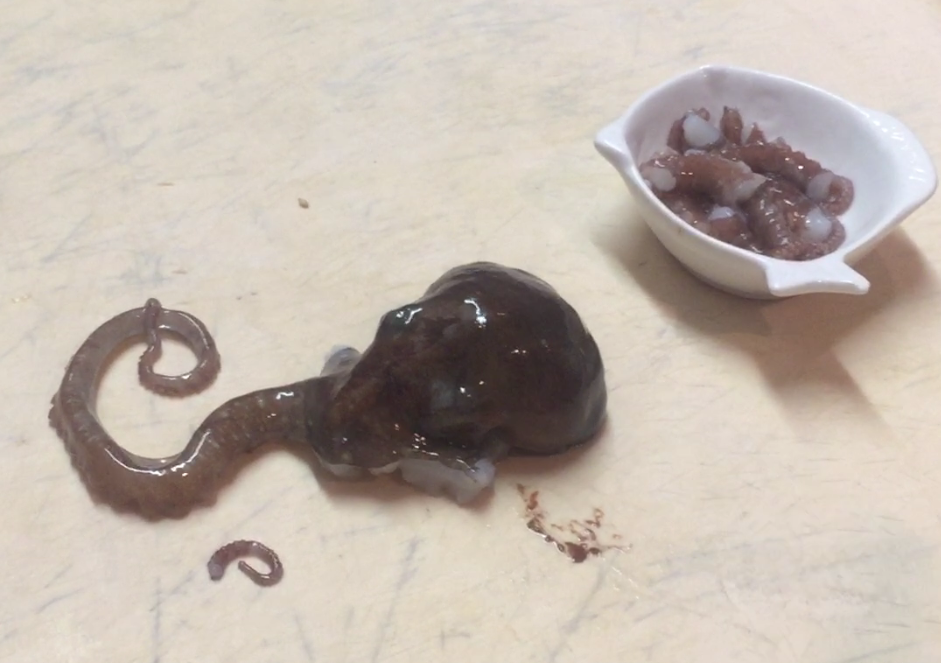
In September 2016, PETA went inside restaurants in Los Angeles that mutilate and serve live animals. At T Equals Fish, PETA’s observers watched in horror as chefs held down an octopus—nicknamed “Pearl” by an observer—and cut off her sensitive limbs with a butcher knife. The severed limbs, which continued moving and reacting to stimuli, were served, squirming, to diners. But the intelligent and sensitive octopus’ suffering was far from over. Kitchen staff explained that she would be kept alive until another customer ordered the remaining limbs. Writhing helplessly and trying desperately to escape, Pearl was pushed to the side like a halved carrot or tomato. According to the chef, after every last arm and leg has been cut off, he will kill her by ripping open her mantle and tearing out the intestinal contents.
“[T]he octopus, which you’ve been chopping to pieces, is feeling pain every time you do it. It’s just as painful as if it were a hog, a fish, or a rabbit, if you chopped a rabbit’s leg off piece by piece. So it’s a barbaric thing to do to the animal.”—Cephalopod expert Dr. Jennifer Mather
Shrimps and Lobsters Torn Apart, Animals Steamed Alive
T Equals Fish is just one of over a dozen restaurants in California and New York that mutilate and serve live octopuses and other animals. Restaurants “prepare” live shrimps by cutting their tails off and plating them right next to their moving bodies or by tearing off their protective exoskeletons so that diners can bite right into their flesh. Lobsters’ tails are also torn off, prepared “sashimi style,” and plated right next to their mutilated but still-living bodies, for the amusement of patrons. Some restaurants steam octopuses, lobsters, and other animals alive in “live seafood” hot pots. Raucous and giggling restaurant-goers often poke at the struggling animals, and some are “tasked” with preventing them from escaping.
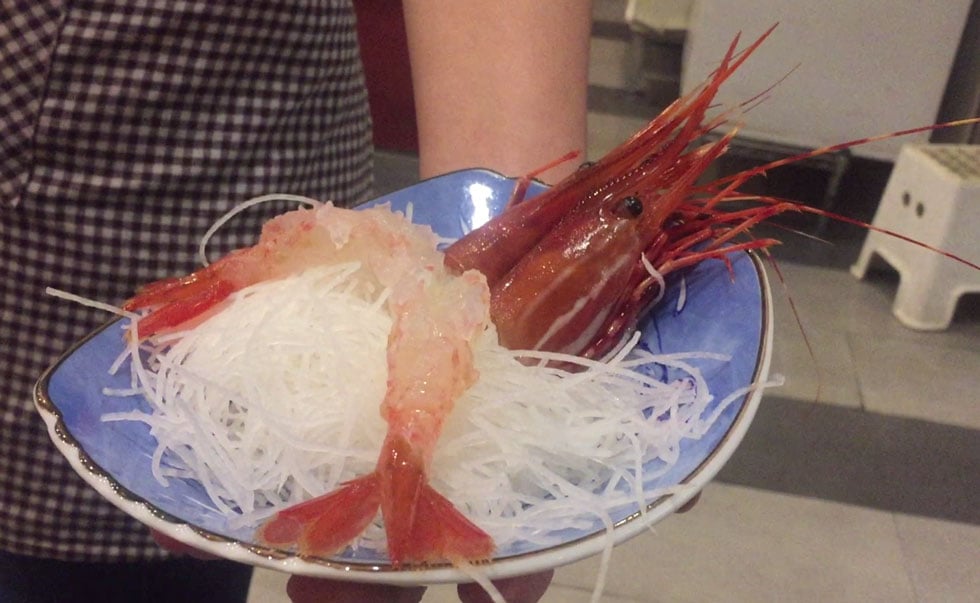

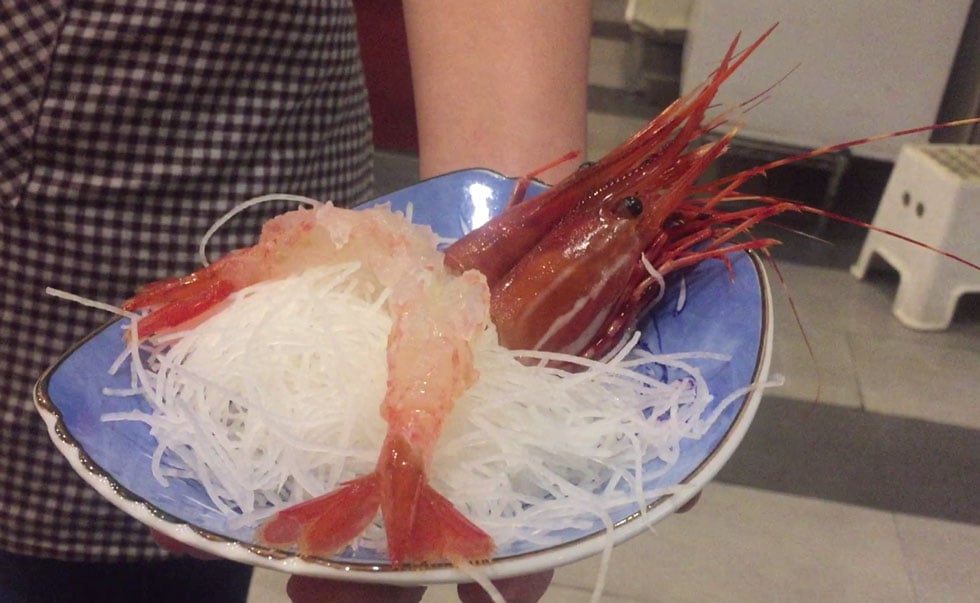

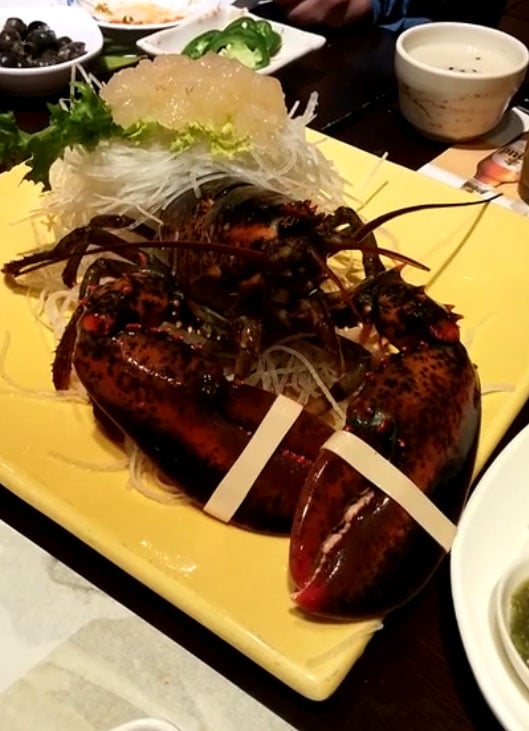
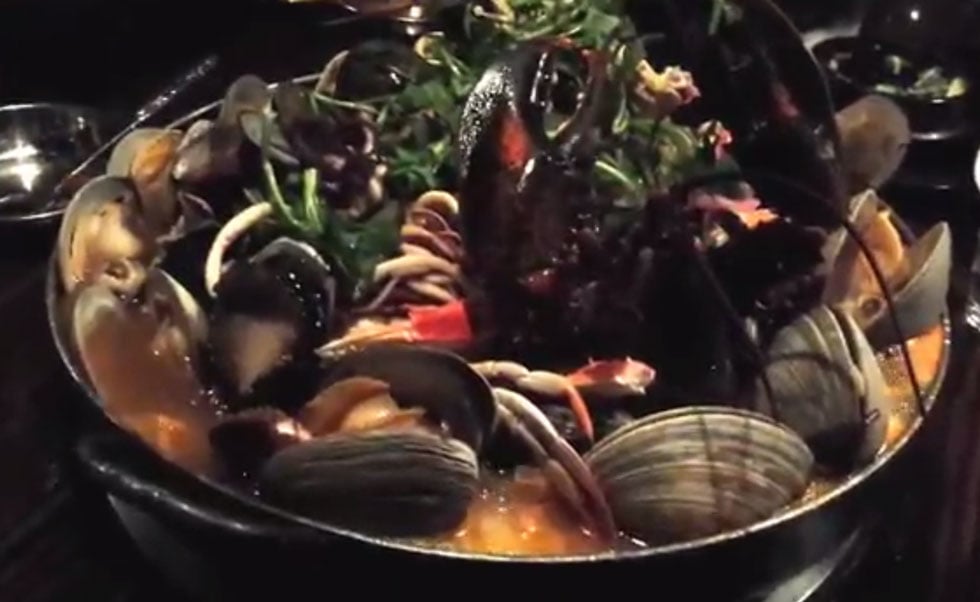

The Science Is Clear
Octopuses are so intelligent that they’re sometimes referred to as “primates of the sea.” Readers may remember Inky , an octopus at the National Aquarium of New Zealand, who made international headlines in April 2016 after he climbed out of a tank, traversed the aquarium floor, and slid down a 164-foot pipe to freedom. Otto, an octopus at a German aquarium who was already notorious for juggling hermit crabs and rearranging his tank, repeatedly short-circuited an annoying bright light by climbing onto the rim of the tank and squirting it with water. Like chimpanzees, crows, humans, and dolphins, octopuses also use tools. Veined octopuses carry coconut shells across the ocean floor before meticulously placing two halves together and climbing inside to hide. Blanket octopuses snatch poisonous tentacles from the Portuguese man o’ war and wield them like swords. And mimic octopuses impersonate more than 15 other species.
When it comes to experiencing pain, Dr. Mather explains that octopuses “can anticipate a painful, difficult, stressful situation—they can remember it. There is absolutely no doubt that they feel pain.” Shrimps, lobsters, and other crustaceans fulfill all of the “criteria” of pain sensation, including having a developed nervous system and exhibiting behaviors like wound-guarding and heightened protectiveness—just as a dog, pig, or primate would do. And according to invertebrate zoologist Dr. Jaren G. Horsley, “[A] lobster is in a great deal of pain from being cut open … [and] feels all the pain until its nervous system is destroyed.”
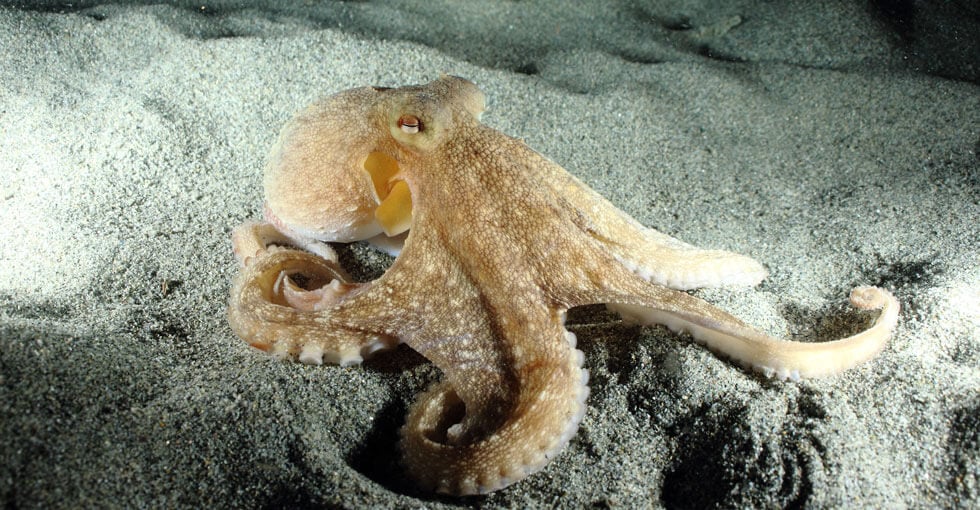
You Can Help Stop This!
We’re calling on lawmakers to introduce legislation that prohibits animals from being mutilated, “prepared,” and served alive. If you live in one of the following states, please click below to take action.
